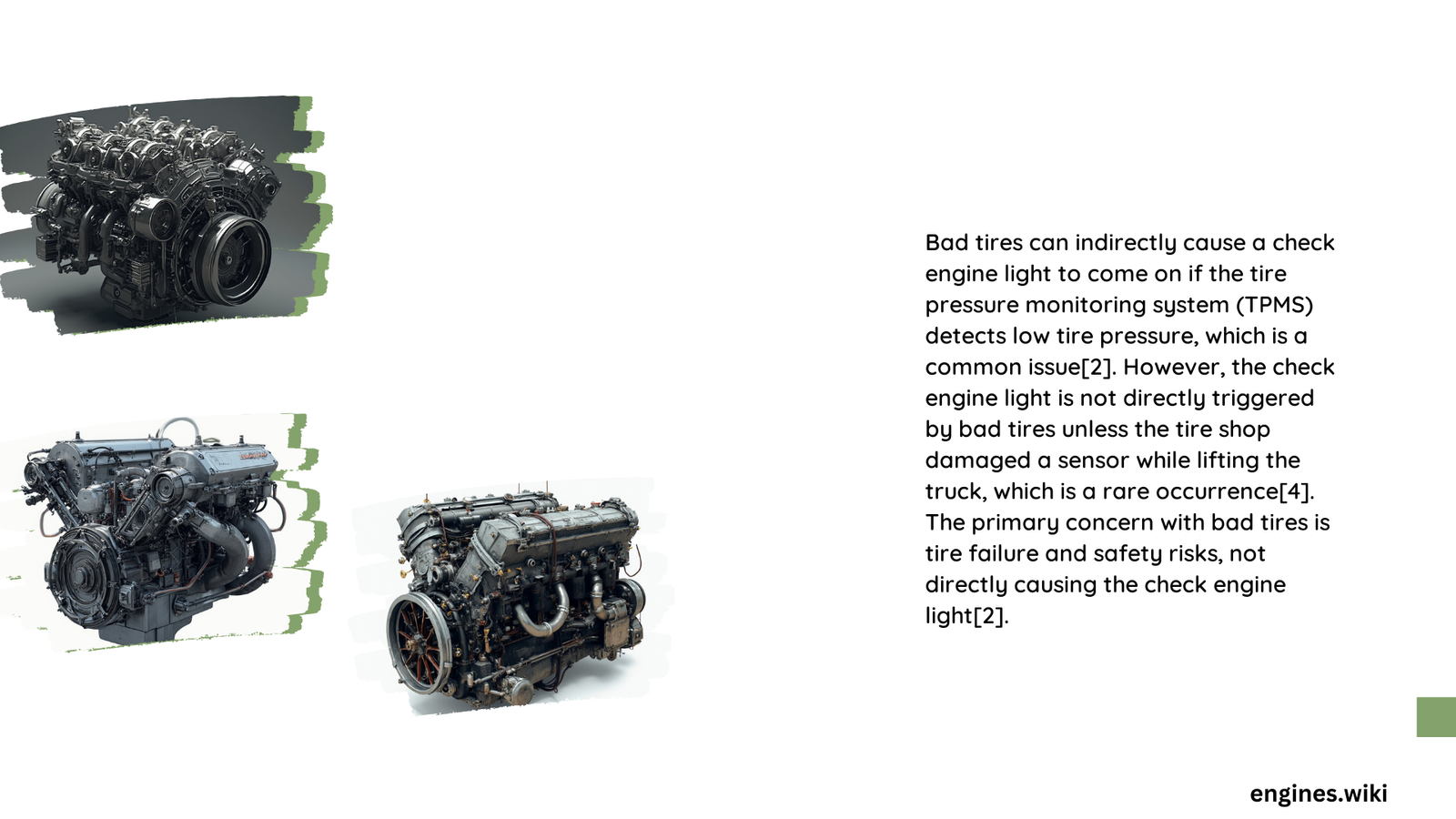Tire conditions can subtly influence your vehicle’s complex electronic systems, potentially creating scenarios where bad tires might indirectly activate the check engine light. While not a direct cause, certain tire-related issues can create cascading effects in your vehicle’s sensors and performance metrics, leading to unexpected diagnostic warnings that require professional investigation and precise understanding.
What Connects Bad Tires to Check Engine Light Activation?
Vehicle owners often wonder about the intricate relationship between tire conditions and engine diagnostic systems. The connection is nuanced and depends on multiple interconnected factors.
Can Tire Pressure Trigger Engine Diagnostics?
Tire pressure plays a critical role in vehicle performance and sensor interactions. Here’s a detailed breakdown:
| Tire Pressure Scenario | Potential Engine Light Impact | Probability |
|---|---|---|
| Slight Pressure Deviation | Low | 10-15% |
| Significant Pressure Imbalance | Moderate | 25-35% |
| Persistent TPMS Sensor Malfunction | High | 40-50% |
Key Factors Influencing Check Engine Light
- Sensor Communication Disruption
- TPMS sensors transmit real-time pressure data
- Malfunctioning sensors can send conflicting signals
-
Potential computer system misinterpretation
-
Electronic System Complexity
- Modern vehicles have intricate sensor networks
- Tire pressure affects multiple vehicle systems
- Potential for cross-system communication errors
How Do Tire Conditions Impact Vehicle Performance?
Tire conditions extend beyond simple pressure measurements:
- Uneven Wear Patterns
- Indicates potential alignment issues
- Can stress suspension components
-
Might trigger secondary diagnostic responses
-
Tread Depth Implications
- Reduced traction affects vehicle stability
- Potential increased load on drivetrain
- Indirect performance measurement triggers
What Professional Diagnostics Reveal?
Automotive experts emphasize several critical observations:
- Tire issues rarely cause direct check engine light activation
- Indirect system interactions can create diagnostic complexities
- Professional assessment requires comprehensive evaluation
When Should You Seek Professional Inspection?
Recommended action steps:
- Monitor tire pressure regularly
- Check for consistent warning indicators
- Perform comprehensive vehicle diagnostics
- Consult certified automotive technicians
Technical Insights for Vehicle Owners

Understanding the nuanced relationship between tires and engine diagnostics requires:
– Advanced sensor technology knowledge
– Comprehensive vehicle system understanding
– Regular maintenance practices
Cost Considerations
Potential diagnostic and repair scenarios:
– Basic TPMS sensor replacement: $50-$150
– Comprehensive system diagnostic: $80-$250
– Potential additional repairs: Variable
Preventative Maintenance Strategies
- Quarterly tire pressure checks
- Rotate tires every 5,000-7,500 miles
- Use manufacturer-recommended tire specifications
- Invest in high-quality tire pressure monitoring systems
Final Technical Assessment
While bad tires do not directly cause check engine light activation, they can create complex sensor interactions that might trigger diagnostic responses. Professional evaluation remains the most reliable approach to understanding these intricate vehicle system relationships.
Pro Tip: Never ignore persistent warning lights, as they often indicate underlying technical complexities requiring expert attention.
